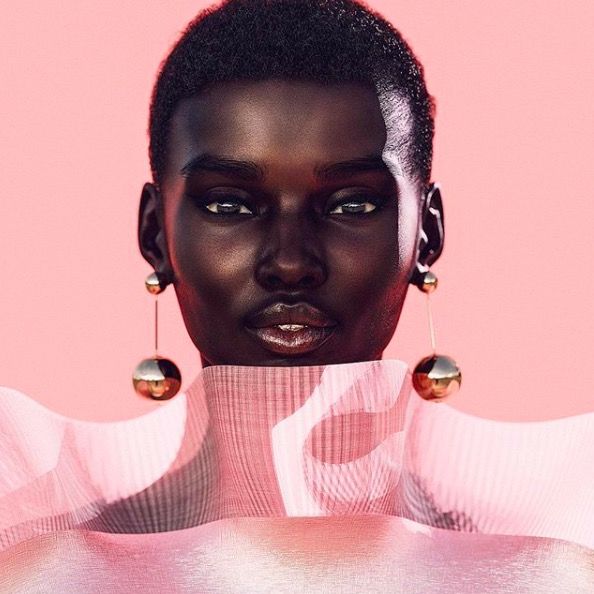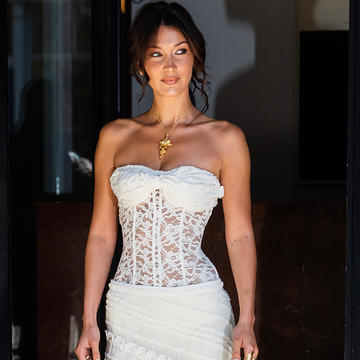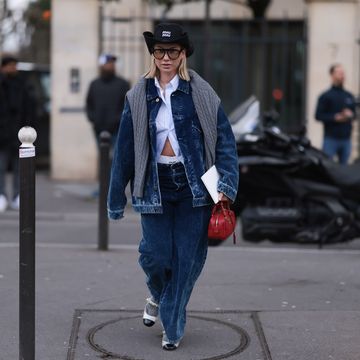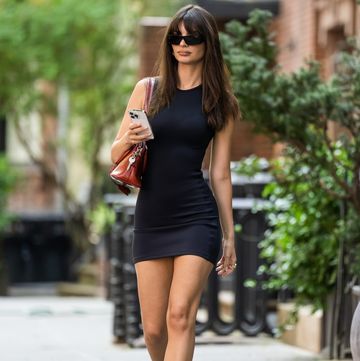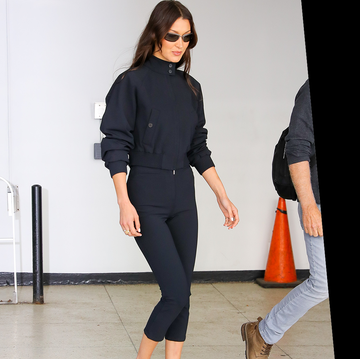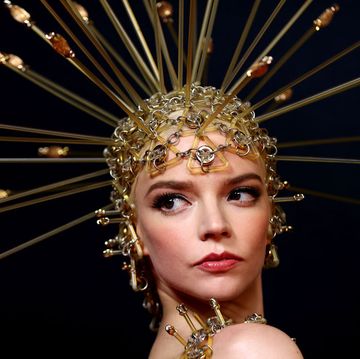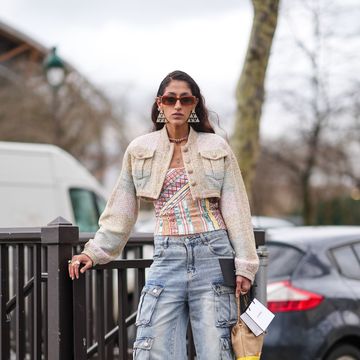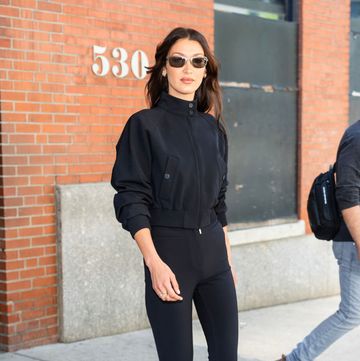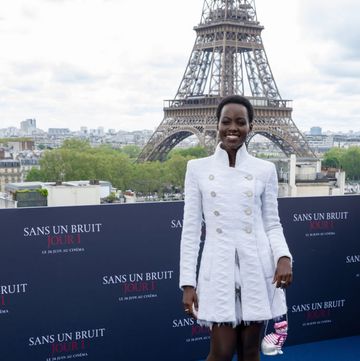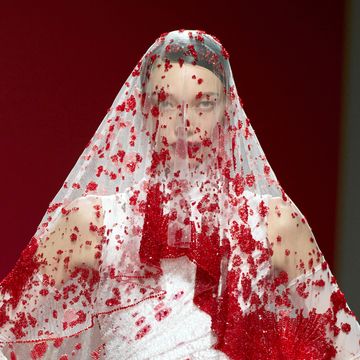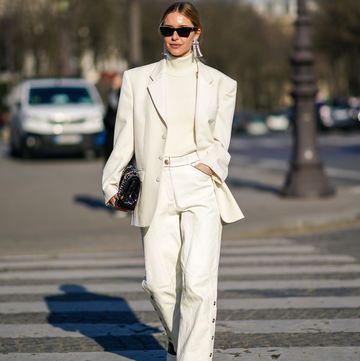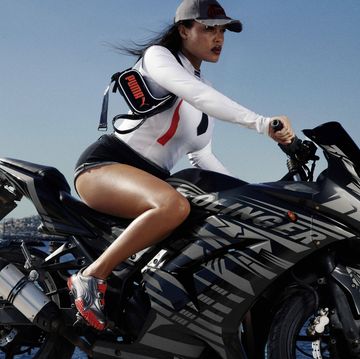In just two years, model Shudu has been featured in Vogue and WWD, fronted campaigns for Balmain and Ellesse, and graced her first red carpet at the 2019 BAFTA film awards wearing a bespoke gown by Swarovski.
Most young women don’t achieve that type of prevalence in a lifetime. But then again, with 178,000 Instagram followers, strikingly symmetrical features and impossibly luminous skin, Shudu isn’t just any model. She's unreal, literally.
Who is Shudu?
Spawned in the bedroom of Cameron-James Wilson, a former fashion photographer who has shot the likes of Gigi Hadid, Shudu is one of a number of virtual models and influencers you might have seen infiltrating your Instagram feeds. Along with the more stylised virtual model Noonoouri, and the streetwear-clad Lil Miquela, who recently landed in hot water for her ‘queer-baiting’ Calvin Klein advert featuring Bella Hadid, they're becoming impossible to escape.
After becoming disillusioned with the world of fashion photography, Wilson decided to quit and learn 3D drawing from YouTube tutorials. 'I’ve always loved drawing and creating characters, so when I started to realise that my heart wasn’t in photography, I decided to take the leap,’ says Wilson.
Using a program called Daz 3-D, he created the character of Shudu back in spring 2017.
'I wanted to create a really strong and powerful image that celebrated a beauty I don’t see represented in media often enough,' Wilson explains. Shudu’s image soon went viral and was reposted by Fenty Beauty and Tyra Banks, who thought she was a real model.
'I feel like she looks realistic because she’s captured in a very editorial way, and your only comparison for my images are other fashion images which are often unrealistic and quite retouched,' Wilson says.
In fashion photography, Wilson was taught to remove blemishes, but adds natural imperfections such as pores, hyper-pigmentation and fine lines to Shudu in order to make her look more life-like.
And whereas some robo influencers have been given faux-thentic personalities by their creators - such as Lil Miquela's 'woke' captions or Bermuda, a 'self'-professed Trump supporter-turned-liberal – Wilson makes no illusions that Shudu has her own personality. This means her followers 'associate with her in lots of different ways' and will often project a personality onto her.
Are there other digital models?
Although Shudu might be his most well-known, Wilson has made six more virtual models, including Margot and Zhi, who starred alongside Shudu in Balmain’s pre-fall 2018 campaign. Together, they make up ‘The Diigitals’ - the world’s first all-digital modelling agency launched by Wilson.
Shudu's admirers included Alicia Keys, Tyra Banks, and Naomi Campbell. Yet after a Harper’s Bazaar interview, in which it was revealed her creator was a twenty-eight-year-old white man, things started to change. Many women of colour became critical, including British writer Bolu Babalola, who called Shudu an image 'contrived by a white man who has noticed the ‘movement’ of dark-skinned women.'
Another of the criticisms levelled against Wilson is that he profits from Shudu’s modelling work, taking potential jobs away from real black women. Wilson insists, however, that Shudu isn’t being hired in place of existing black models. 'When brands book Shudu, they’re not booking her instead of a real model. They’re booking her because she's a virtual model and they want to spark a discussion about technology in fashion.'
In fact, for Shudu’s SS19 campaign for Ellesse, a real-life model, Misty Bailey, was used as Shudu’s body muse to bring her to life, which led to Misty being booked in the main campaign alongside Shudu herself.
But Wilson says he’s glad Shudu sparked a conversation around the issues black models face in the fashion industry. 'I think all good art inspires debate and I’m glad that it got people talking about fair payment for black women in the modelling industry and how many opportunities there are for black women.'
Is this the end of human models?
As more and more fashion brands book virtual models/influencers for their campaigns, does Wilson see a future where virtual models take up the majority of billboards and magazine ads, rendering human models obsolete? 'At this point, I don’t think there is competition from virtual models to real models,' Wilson muses. 'But who knows what might happen in the future?'
Model Ashanti Hildreth also says she’s not worried about virtual models taking potential work.
'If you think about it, it’s probably far more expensive to hire someone to make the virtual model, pose it, and also virtually edit clothes on them, when you could just hire a real model and dress the clothes on them,' she says.
Indeed, the skills and time required to create a single shot of a virtual model complete with virtual outfit (Wilson says each post can take him anywhere between a few days to a few weeks), would suggest real models don’t need to watch their backs just yet.
But IRL influencers may have their work cut out. As we grow ever more weary of influencer culture, could it be that the transparent artifice of virtual influencers like Lil Miquela actually make them feel more earnest and sincere? And from Off-white to Fashion East alumna Charlotte Knowles, whatever Lil Miquela wears turns to sartorial gold.
Holograms, virtual dynasties and beyond
Diversity and body positivity is something Wilson is also keen to champion in his world of digital models. Although Shudu might look like a typical supermodel with her lithe frame, Wilson has also created the dark-skinned, plus-size model Brenn, who featured in an ad for Smart Car on Instagram in March.
'I didn’t want people to feel like everyone in the 3D world is perfect in quotation marks and tall and slim like Shudu,' Wilson says. 'I want people to feel like everyone is included.'
For his latest virtual creation, Wilson is collaborating with his Instagram followers, who can influence how the model will look by responding to a series of questions posted via Wilson’s Instagram stories. 'Hopefully they’ll feel some kind of emotional attachment because they'll have had a hand in creating them,' Wilson says.
Indeed, according to recent consumer research conducted by Mindshare UK’s Futures division, almost 30 per cent of 18-34 year olds surveyed said they would prefer a virtual fashion model who looked like them and had the same body shape over a real fashion model.
So, with the technology available to turn real models into holograms, does Wilson see virtual models strutting the catwalk as holograms in the future? 'Absolutely. I don't even think it will be that far away at all,' says Wilson.
'Though I think you'll primarily see this not at fashion week, but in a department store. Imagine walking into a really big department store and there’s a runway going on 24/7 that could show you the latest designs on a billboard. It would be really exciting!'
Despite luxury fashion brands queuing up to work with his virtual dynasty, Wilson says he doesn’t take himself too seriously. 'I don't want people to think that I'm trying to say this is reality, or this is how people should be. It’s not,' he affirms. 'I'm just trying to show you a cool story, a bit like the Marvel universe, except this one's more fashion.'
